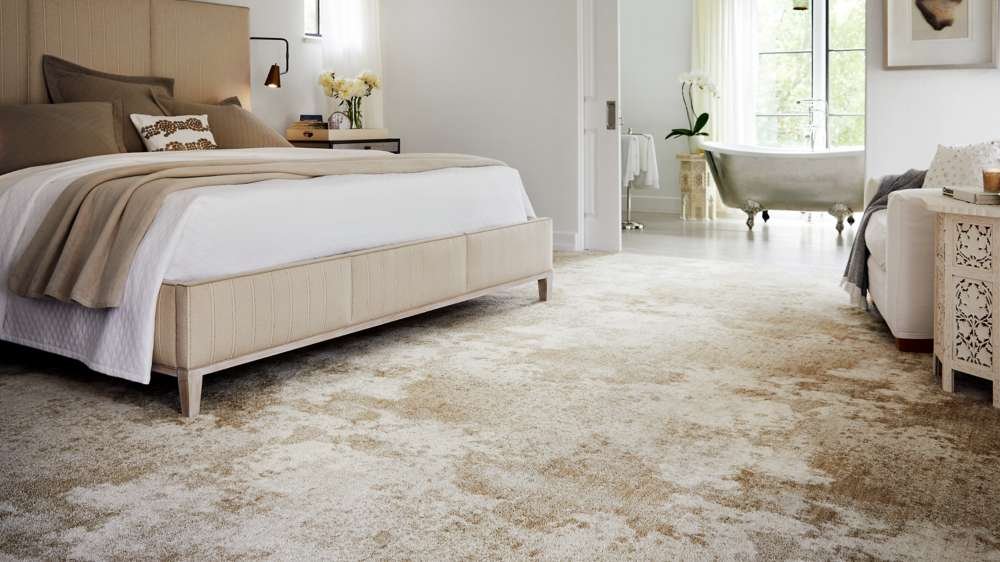How Carpet is Made: 3 Essential Stages
If you've been in a luxurious place, take a moment to look down and notice the flooring. There are high chances that you’ll find some type of carpet being used, and that’s all because of the unparalleled elegance this flooring offers.
It’s no coincidence that carpets have been used in most royal palaces, the world was and still is mesmerized by its charm. One of the underrated parts of its beauty is the intricate process of how they are created.
In this article, we’re going to discuss this very process and the 3 stages we see in modern carpetmaking.
What is Carpet?
Carpet is a type of floor covering made from woven fiber. The term is often interchangeably used for rugs, though opinions are divided on the exact definitions of both words.
It is generally understood that carpets refer to a type of flooring that is fixed and covers the entire room, whereas rugs are a subset of carpets that are moveable and cover only a small section of the room.
Please note: we will use the word “carpet” to refer to rugs too since the distinction was less relevant in the past as it is today.
A Short History of Carpet
Central Asia
The history of carpetmaking goes back thousands of years to Central Asia where nomadic tribes made use of wool for warmth and comfort in the harsh winters. Over time, the need for carpets shifted from the purpose of survival to a more artistic and stylistic one instead.
15th Century Persia and Mughal India
The process of creating carpets truly became an art during the 16th century in Persia and Mughal India. Influenced by geometric patterns and bold colors, carpets during this era were often a common sight in royal palaces and lavish settings.
Persian and Indian carpets were so prized that they were exported all the way to Europe to decorate the estates of the nobility.
Early Modern Europe
With the victory of The Hundred Years' War, France was one of the most powerful countries in Europe at the time.
However, it was losing a lot of money importing carpets from the Middle East, so the nobility started sponsoring craftsmen and carpetmakers from the Middle East to live within French territories and produce carpets solely for them.
This intermingling of middle eastern craftsmanship with French design and aesthetics led to the birth of a new style of carpet designing called French Orientals. It gained a lot of traction in Europe and soon enough, England started setting up its own workshops to produce carpets of various styles.
Industrial Revolution
Some 250-300 years later, the Industrial Revolution was in full swing in England and it had a monumental effect on the manufacturing process of carpets. Where in the past, natural textiles like wool were used to make carpets, England introduced synthetic materials like nylon, which were cheaper and lasted longer too.
By the 1840s, machines like looms became capable of power weaving, which rapidly increased the speed of production and ultimately replaced most handcrafted carpets.
3 Stages of Carpet Production
The process of producing carpets varies across countries. Most of the world is now using sophisticated machines to automate and expedite the repetitive parts of carpetmaking. Some countries, however, do still use a combination of traditional methods along with modern machines.
There are roughly 3 stages in the process of carpet manufacturing. Each stage is common between traditional carpet making and modern carpet production, although with different tools and equipment.
1. Tufting
To begin the process of modern carpetmaking, the textile material’s fibers are woven or tufted into a primary backing material. The purpose of primary backing material is to hold the yarn in place and give it stability. This process is done through the help of a tufting machine that pulls the yarn through the backing material, just like a sewing machine.
While tufting is going on, a small hook called a looper holds some of the yarn fibers in place to create loops; this process is called loop pile construction. In the 1970s, carpetmakers used a higher pile of loops to create the typical shaggy carpet look that was so popular at the time.
An optional step that is also commonly seen during this stage is using the looper to rock back against a knife, making small cuts in the loops of the yarn. This results in the creation of a different type of carpet called cut pile carpet, which is often softer and fluffier to touch.
2. Application of Dye
Before we proceed, please note—applying dye does not necessarily need to be the second step; you can always apply dye to the yarn before it is tufted, which is often called yarn dyeing or pre-dyeing. Some of the benefits we see with this are that the colors are more consistent and uniform.
However, in most modern settings, dye is applied to the yarn after tufting as it allows for more flexibility to add colors and is more affordable as well. There are various methods of dyeing the carpet but two of the most common techniques we see are:
• Boiling:
This is where the tufted carpet is placed in a vat of water and mixed with a dye. The carpet is then boiled in this mixture for around four hours for the colors to get absorbed in the yarn fibers.
• Silkscreening:
Silkscreening is similar to how designs and patterns are made on T-shirts. The tufted carpet is put under multiple screens with holes through which the colors are pushed, stamping the design on the surface.
After using one of these methods, the carpet is steamed, rinsed, and dried to help set the colors on the carpet.
3. Finishing Process
The final stage of carpetmaking includes bonding the tufted carpet to a secondary backing material. This happens in two phases:
• First, the tufted carpet and the secondary backing material are put in a machine that coats both the materials using a latex adhesive.
• Then the materials are put into a heated press that permanently bonds all the parts.
After this process, the carpet is heated in an oven that plays the dual role of helping the colors lock in place and securing the bond of all the materials. Once this is done, the carpet goes through a process called shearing, where any loose ends are shaved to create a smooth surface.
The last step of the finishing process is to brush and vacuum the carpet and prepare it for packaging.
Conclusion
We strongly believe learning about the way different types of floorings are created helps homeowners select the best flooring material for their homes.
It’s no different with carpets; these little fibers of textile go on an incredible journey from ideation to manufacturing to finally finding the right home to provide warmth and comfort. Carpetmaking may be an ancient practice but it will never go out of style.
Want carpet for your home?
Reach out to us at Floors2Day by giving us a call at 877-356-6759 or booking an appointment online using this link. (If you book online, you say $150!) We offer our flooring services in Maryland, Delaware, Washington D.C., Virginia, Wisconsin, and Illinois!
Here at Floors2Day, we provide the best quality flooring products, coupled with excellent customer service, and quick and easy installation.
With over 20 years of experience in flooring, we have seen it all. Every client is unique, and our services are always custom to your needs! We also proudly offer 12-month 0% interest and 90-days deferred financing, learn more here! So, sit back and relax as our team provides you with an amazing, worry-free renovation experience.
To learn more about the flooring options we offer, click here.






